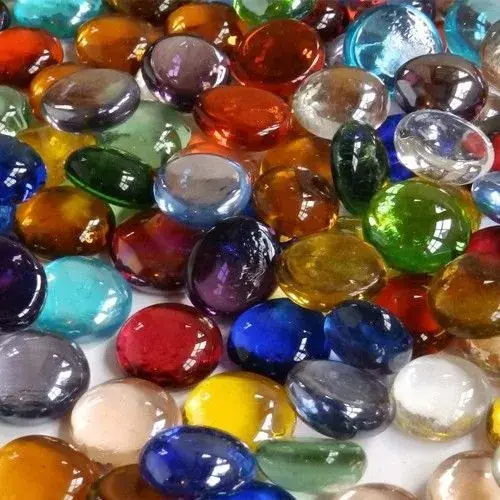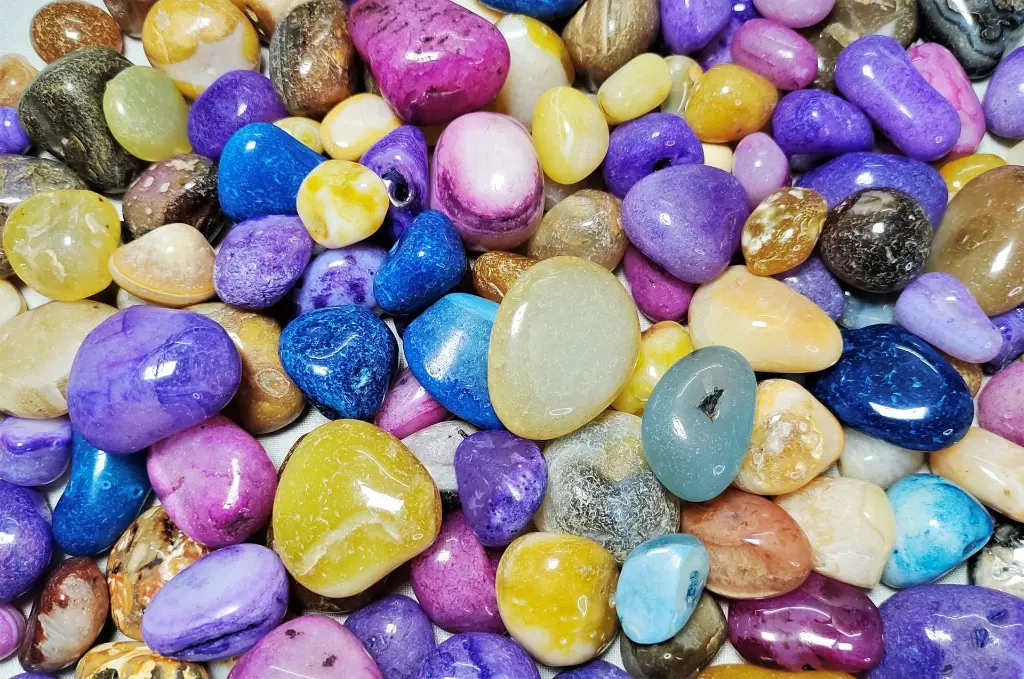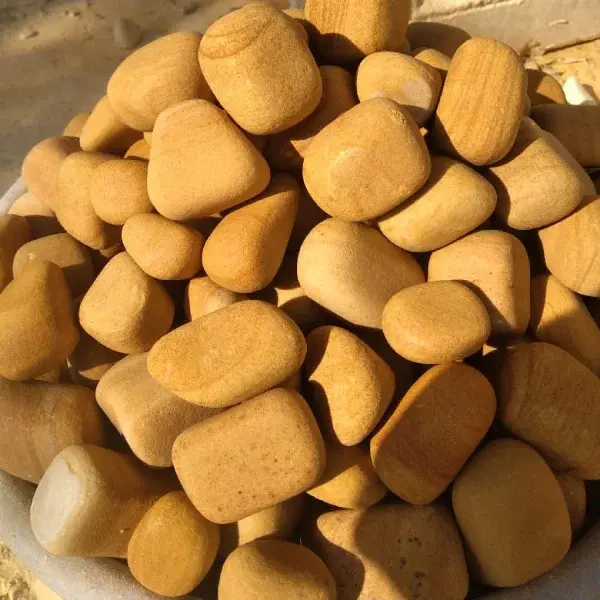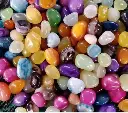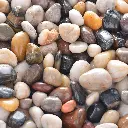Pebbles / Stones
Types of Pebbles:
- River Pebbles: Naturally rounded, eroded stones found in riverbeds, coming in various colors and sizes.
- Glass Pebbles: Made from glass and used for decorative purposes, such as in aquariums or landscaping.
- Onyx Pebbles: A type of stone that comes in various colors and is used for both decorative and functional purposes.
- Polished Pebbles: Stones that have been polished to a smooth, shiny surface, often used for decorative applications.
- Sand-stone Pebbles: Made from sandstone, a sedimentary rock that can be shaped and used for various purposes like landscaping, garden features, and aquariums.
- Teakwood Pebbles: Smooth, brown-colored, tumbled stones, often made from Sandstone, adding a touch of sophistication to designs.
- Other Types: Grey pebbles, white pebbles, black pebbles.
Uses of Pebble Stones:
- Landscaping: Used for pathways, garden beds, and decorative elements.
- Decoration: Used in aquariums, planters, and other decorative projects.
- Industrial Applications: Used in filters, ceramics, and other industries.
Benefits to Use Pebble Stones:
- Aesthetic and Design: Natural beauty and versatility.
- Natural Beauty: Pebbles are natural, adding a calming touch with their smooth surfaces and diverse color palettes.
- Versatility: Can be used in a wide range of applications, from garden paths and borders to water features and interior accents.
- Cost-Effectiveness: A cost-effective solution for creating visually appealing and functional outdoor areas.
- Practical Benefits:
- Durability and Resistance: Resistant to weathering, erosion, and pests, making them a long-lasting and reliable choice for indoor and outdoor use.
- Low Maintenance: Require minimal upkeep once installed.
- Improved Drainage: Help to improve drainage in gardens and landscapes, preventing waterlogging.
- Weed Deterrent: Can act as a natural weed deterrent, reducing the need for herbicides.
- Soil Erosion Control: Can help to stabilize soil in areas prone to erosion.
- Therapeutic and Health Benefits:
- Pressure Point Stimulation: Walking on pebbles can stimulate pressure points on the sole of the feet, potentially promoting relaxation and improving circulation.
- Improve Balance and Coordination: Walking on a pebble surface can help improve balance and coordination.
- Reduce Blood Pressure: Some studies suggest that pebble walking may help to reduce blood pressure.
- Improved Physical & Mental Well-being: Walking on pebbles can have a positive impact on both physical and mental well-being.
Size and Weight:
- Udden-Wentworth Scale: Pebbles are defined as clasts with a particle size of 4mm to 64mm (0.16 to 2.52 inches).
- Typical Sizes: Generally larger than granules (2mm to 4mm) and smaller than cobbles (64mm to 256mm).
- Weight: Varies greatly depending on the size and the material (e.g., granite, marble).
- Colors:
- Natural Colors: Come in a wide array of natural colors, including white, gray, brown, green, pink, and even mixed colors.
- Color Variations: The colors depend on the minerals and rocks they are composed of.
- Shape: Typically rounded or elliptical in shape due to weathering and erosion by water.
Let's Connect
Get in touch with us customers if anyone requires Aloe Vera


